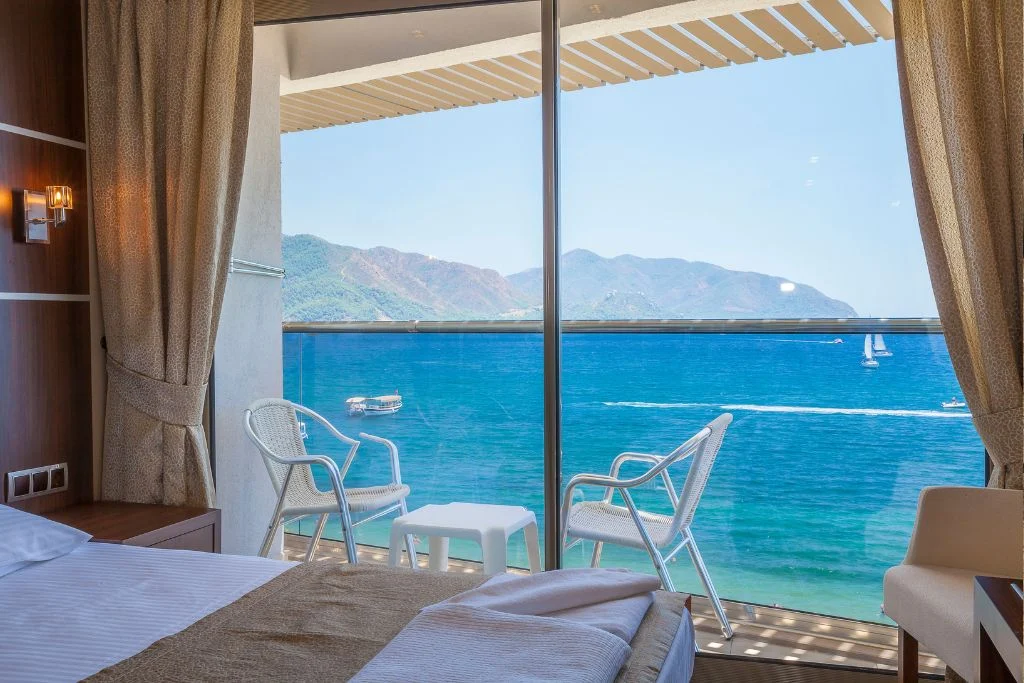Our Visit to a Coffee Farm Tour in Boquete
Labeled as one of the top things to do in Boquete we knew we wanted to tour a small family owned and operated coffee farm when we were scouting out what to do while in Boquete. We knew we wanted to add a farm to cup experience to our list of things to do in Boquete because the region is listed as one of the best places in the world to grow coffee.
Why we chose the Finca Casanga coffee farm tour in Boquete
We chose Finca Casanga not only due to its proximity to our accommodation in Bajo Boquete but also because it stands out as one of the rare Boquete coffee farms that oversees the entire coffee bean process in small batches – from their farm directly to your cup and they provide a hands-on tour of the entire process plus you get to drink coffee while you learn about different brewing processes!
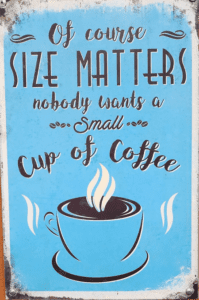
While numerous coffee growers purchase and plant coffee trees, nurture them, harvest the produce, and then sell the beans to wholesalers, Finca Casanga distinguishes itself by managing every step of the process independently.
In the coffee industry, only a select few, like Finca Casanga, control the whole process. As such, they are capable of telling the whole story of coffee production in a hands-on way right on their plantation just outside of Boquete Panama.
Booking our Boquete Coffee Tour
It was a straight forward process to book our Boquete coffee tour with Finca Casanga through the Viator website and we were able to select whether we wanted the tour done in English or Spanish!

If you use our affiliate link to book your tour you’ll be helping support this site and no cost to you
Wondering Where to Stay?
Looking for Budget-Friendly Accommodations? – We suggest Booking.com
Getting to the coffee farm tour from Boquete
Finca Casanga has a couple of options for getting to their farm.
- You can drive up on your appointed day but the road up to the farm is rough and a little steep, or
- you can have them pick you up at the Plaza San Francisco in Alto Boquete (We hailed a taxi in Bajo Boquete and arrived at the Plaza early enough to enjoy an ice cream and a cold drink at the The Garden Restaurant & Country Store while we waiting for pickup. )
- After the tour Finca Casanga will give you a ride back down to the Plaza San Francisco, or as in our case, the graciously provided a ride back into Bajo Boquete after the tour.
Touring Finca Casanga – a Boquete Coffee Farm
Everything needed for the tour is provided at the farm including bug spray and filtered water! The tour starts in a open-air classroom environment where Enrique shared with us about what they do and why that makes their coffee farm unique. We were able to handle freshly picked coffee cherries and taste the fruit of the coffee bean.
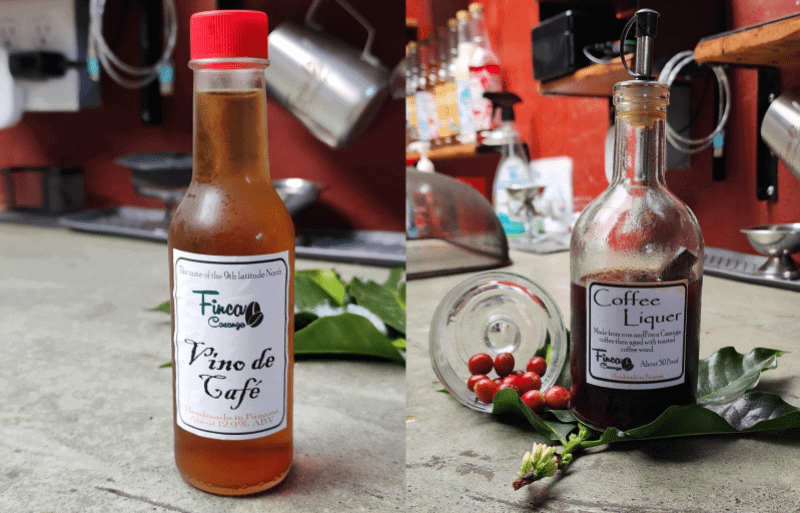
I’m not going go into their whole coffee making process in the post because honestly there was so much information and we were there to experience the tour, not document it. We did get some video and you can see that over on our YouTube channel The Mobile Retiree visits Finca Casanga. Remember our goal of our posts and videos is to encourage you to want to do the activity yourself, not save you from having to, LOL
(Small world story – The owners of Finca Casanga turned out to be from Salem, OR. We are most recently from Bend – which is just a couple hours and a mountain range away – and actually lived in Salem for a while in the mid-90’s. Their story of how they ended up producing coffee in Panama is fascinating but you’ll need to take the tour to get it. )
From the classroom we went into orchard where the coffee grows and learned what to look for when picking coffee beans. And we picked coffee. Our group happened to be three couples so it was pretty easy for Enrique to pair us off. Not to challenge anyone but we had the best people in our group ever. Aside from us old folk there was a young couple from Germany and a younger couple who were from Mongolia by way of 7 years in California. Everyone was curious and engaged, even the 2 non-coffee drinkers <!!> and we had a great time chatting along the learning process.
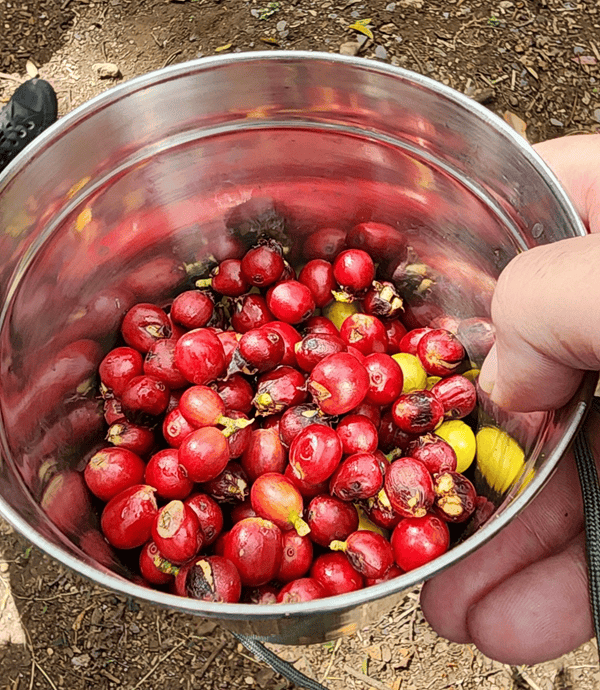
Once each couple had picked a half bucket of coffee we headed back to take our cherries through the process. We started with extracting the beans from the cherry then sorted out any damaged/diseased beans.
Note: They are very careful to treat the diseased beans as hazardous waste and discarded those beans into a sealed container.
From there we moved into the drying area and after that point we were working with previously picked coffee; what we picked that day wouldn’t be used for a while as it takes months to properly dry the beans.
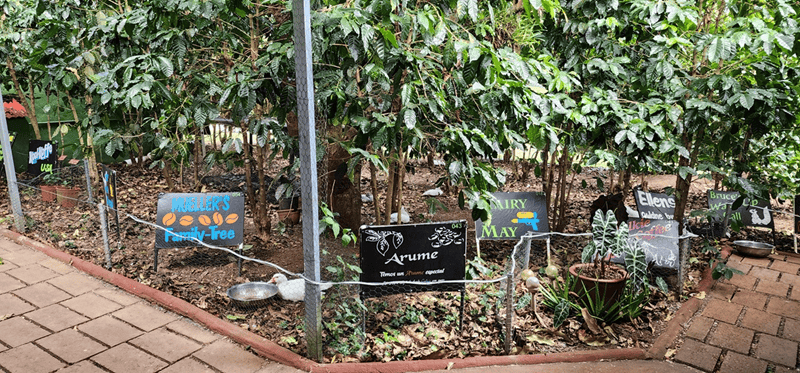
Another thing that separates Finca Casanga from a lot of other coffee producers is the timing of their process. From harvest to roasting is a 7 month timeline for most of the industry but finca Casanga takes 14 months because they naturally dry their coffee beans rather than forcing them to dry – their extra care and attention at every level and a lot of ‘hands and eyes on the product’ sort of work to ensure it is the best it can possibly be.
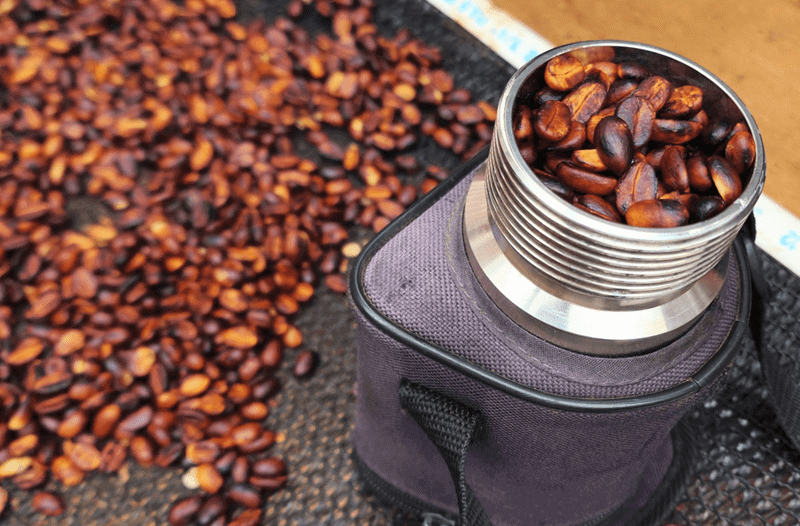
After visiting the drying area and learning about that we talked about the hulling process and got a chance to do some manual labor practicing hulling the beans.
From hulling we went to roasting. Enrique gave us an intense primer on the roasting process and especially why certain roast levels might be chosen depending on the bean and the intended usage. Each couple was given a small bag of beans that were at the end of the drying/aging process and we roasted them up. We got to decide how roasted we wanted them and, oddly enough, all three couples chose ‘Medium’.

After sealing up our freshly roasted coffee (which we got to take with us!) we went back to the ‘classroom’ and got an in depth explanation of coffee brewing methods. We specifically learned about Italian Espresso, French Press and Siphon as brewing style sand were given a cup of each to compare.
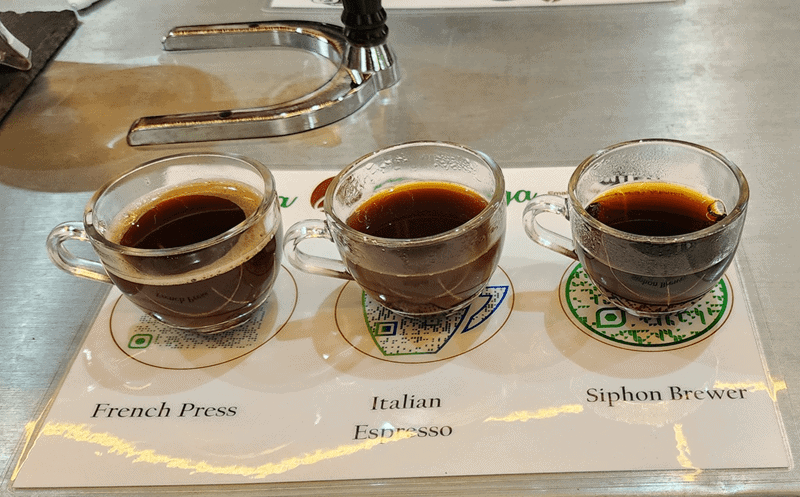
Would we Recommend this Coffee Tour?
Definitely yes! Not only did we enjoy the experience we felt like it was a tremendous value. The little bit of money they charge for the three hour tour, in exchange for the tremendous amount of knowledge they share, is amazing. If you have any mobility issues definitely reach out to them directly to discuss whether accommodations can be made. It is a working coffee plantation so there is a little bit of walking over uneven ground and we did spend most of the time on our feet.
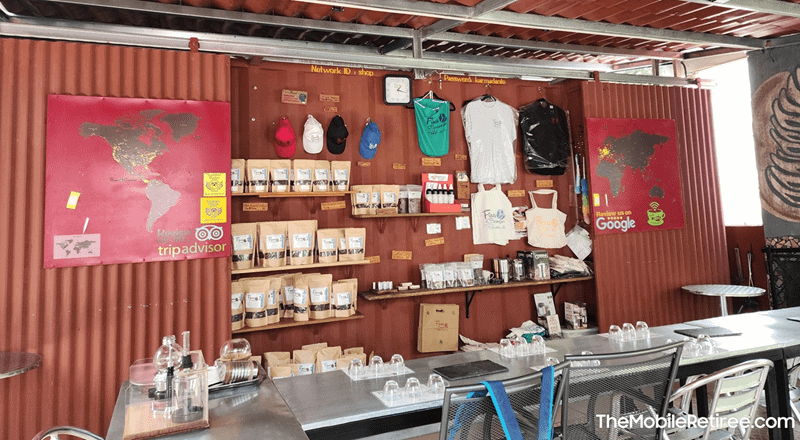
They do ship worldwide and there is some merchandise available there to purchase. There’s no hard sell and you do leave with the free package of coffee that you roasted.
If you do end up visiting Finca Casanga in Boquete, Panama be sure to mention that Jeff and Sandra from TheMobileRetiree.com sent you!
Fun Facts about Coffee & Boquete Panama
- Boquete, in Panama’s Chiriquí Province, is renowned for its exceptional coffee cultivation. Its high altitude (1,200–1,800 meters), cool “eternal spring” climate, and mineral-rich volcanic soil create ideal growing conditions. The region’s diverse ecosystem, natural shade, and equatorial location support optimal Arabica coffee growth. Boquete is especially celebrated for premium varieties like Geisha, prized worldwide for their exceptional flavor, making it a top destination for high-quality coffee production.
- A coffee bean is the seed of the coffee fruit, commonly known as a coffee cherry or coffee berry. The coffee cherry is a small, round fruit that typically contains two seeds, which we refer to as coffee beans. Each seed is surrounded by pulp, mucilage, and a protective parchment layer within the fruit. The fruit undergoes processing to extract the coffee beans, which are then roasted and ground to produce the coffee beverage.
- ‘Honey Processed’ has nothing to do with honey. ‘Honey Processed’ means the cherries are picked off of the trees, the skins are removed and then they are set out to dry. The fleshy cherry fruit dries onto the cherry pit. After it is fully dry, the dried fruit and parchment is removed to get to the coffee bean. This method is known to have a more complex taste.
- Ever noticed those bubbles or foam on your freshly brewed coffee? Well, that’s called “crema,” and it’s not just a visual treat! This golden-brown layer is a sure sign of a freshly brewed cup, formed by the release of carbon dioxide during the coffee roasting process. Beyond its aesthetic appeal, crema plays a crucial role in preserving the aromatic compounds in the coffee, resulting in a smoother and creamier texture. So, next time you see that beautiful crema on your espresso, know that you’re in for a flavorful and freshly brewed delight!
- Finca Casanga has a coffee tree leasing program where you can pay a small fee to lease a tree and get coffee directly from ‘your’ tree. They have a whole system of cameras so you can log in on the web and livestream your tree!


